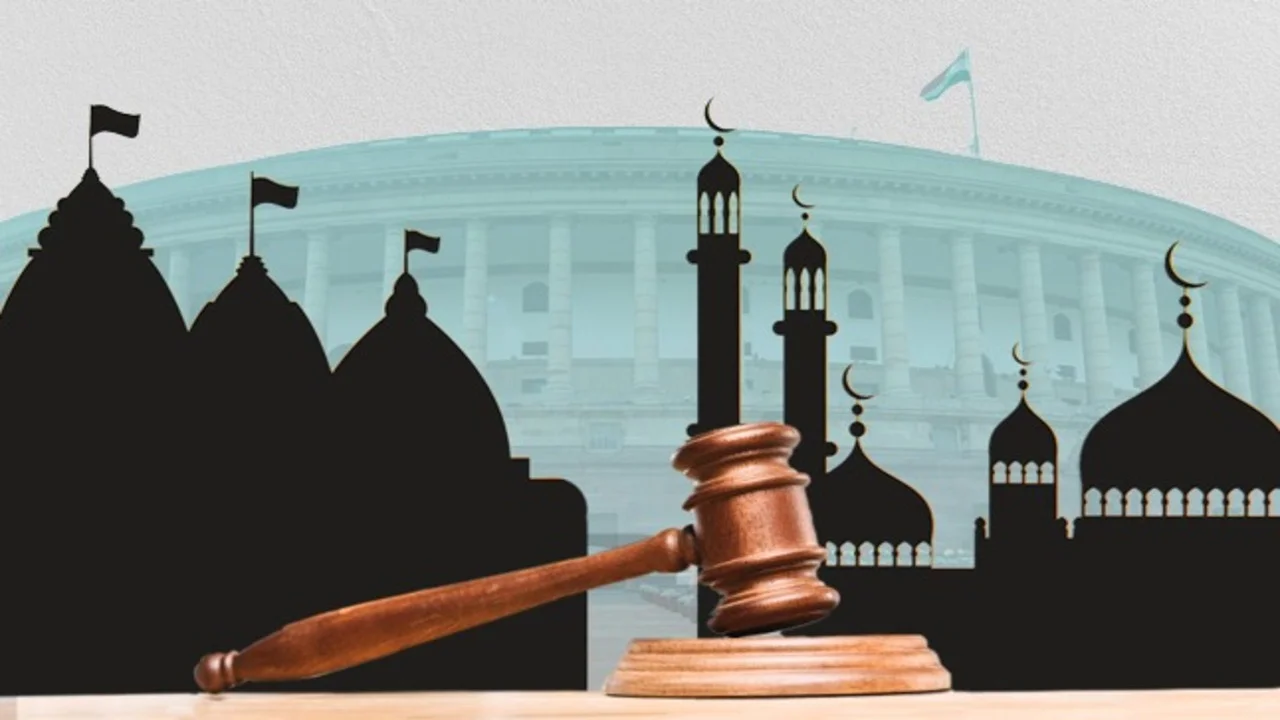The Places of Worship (Special Provisions) Act, 1991, often shortened to the Places of Worship Act, is a significant piece of legislation in India impacting religious harmony and legal landscape. Enacted on September 18th, 1991, it aimed to address historical grievances and prevent future conflicts by freezing the religious character of places of worship as they existed on India’s independence day, August 15th, 1947. Here’s a detailed exploration of the Act, covering its background, key provisions, objectives, and ongoing controversies.
Background and Context
Following India’s independence in 1947, several disputes arose regarding the religious character of certain places of worship, often stemming from historical events and claims of ownership. The most prominent example was the Babri Masjid-Ram Janmabhoomi dispute, which ignited significant religious tensions in the late 1980s and early 1990s. In response to these growing tensions and to uphold secularism, the P.V. Narasimha Rao government introduced the Places of Worship Bill in Parliament in 1991.
Key Provisions of the Act
The following are key provisions of this act:
- Freezing the Status Quo: The Act’s core principle lies in Section 3, which prohibits the conversion of any place of worship from its religious character as existed on August 15, 1947, the day of India’s independence. This effectively froze the status of all religious sites as they were on that date, regardless of any historical claims or disputes.
- Exceptions and Exclusions: The Act excludes the Ayodhya dispute from its purview through Section 4. This specific exemption was a controversial concession made to appease certain political factions. Additionally, the Act does not apply to mutually agreed upon conversions of religious character, acknowledging the possibility of peaceful resolution through consensus.
- Judicial Oversight: The Act bars courts from entertaining any legal proceedings challenging the religious character of places of worship as established on August 15, 1947. This aimed to prevent the judiciary from getting embroiled in potentially volatile disputes.
Why Printing More Money Won’t Make Poorer Nations Rich
Objectives and Significance
The Act’s primary objective was to prevent further communal tensions and violence arising from disputes over religious sites. It aimed to foster religious harmony and stability by establishing a definitive legal framework for the status quo. Additionally, it sought to protect minority communities from potential attempts to alter the religious character of their places of worship.
Controversies and Challenges
Despite its stated objectives, the Act has faced numerous challenges and criticisms:
- Constitutionality: The Act’s constitutionality has been questioned, with arguments suggesting it violates the right to equality before the law and freedom of religion enshrined in the Indian Constitution.
- Exemption of Ayodhya: The exclusion of the Ayodhya dispute has been seen as a political compromise, undermining the principle of equal application of the law.
- Limited Scope: The Act’s focus on the 1947 status quo ignores historical injustices and potential claims predating that date.
- Enforcement and Implementation: Concerns exist regarding the effectiveness of enforcement mechanisms and the potential for misinterpretations or misuse of the Act.
Current Status and Future
The Places of Worship Act, 1991, remains a contentious piece of legislation in India. While it has arguably contributed to maintaining peace and stability, its limitations and controversies continue to spark debates. In 2023, the Supreme Court adjourned a case challenging the Act’s validity, leaving its future interpretation and implementation uncertain.
Conclusion
The Places of Worship Act, 1991, presents a complex chapter in India’s quest for religious harmony. By understanding its historical context, provisions, and ongoing debates, we gain valuable insights into the challenges of managing religious diversity and promoting peaceful coexistence in a pluralistic society. The future of the Act and its impact on religious freedom in India remain to be seen, but its significance in shaping the nation’s religious landscape is undeniable.
FAQs about the Places of Worship Act, 1991
Q: What is the purpose of the Places of Worship Act, 1991?
Ans: The Act aims to prevent communal violence by freezing the religious character of places of worship as they existed on August 15, 1947, and prohibiting their conversion. It strives to promote religious harmony and secularism.
Q: Why is the Act controversial?
Ans: Its constitutionality is questioned as it potentially limits rights like equality and religious freedom. Excluding the Ayodhya dispute raises concerns about fairness and political compromises. Additionally, focusing solely on 1947 ignores historical claims and enforcement issues that exist.
Q: Does the Act prevent all disputes over religious sites?
Ans: No, it only applies to pre-1947 disputes and excludes certain categories like the Ayodhya case. Disputes regarding ownership or management within the same religious denomination are not covered.
Q: Has the Act been effective in achieving its goals?
Ans: It has arguably contributed to peace and stability by deterring attempts to alter the religious character of sites. However, the limitations and controversies raise questions about its long-term effectiveness and inclusivity.
Q: What is the future of the Act?
Ans: The Supreme Court’s upcoming decision on its validity could significantly impact its interpretation and implementation. Finding solutions to address limitations and uphold rights will be crucial for its future role in fostering religious harmony.
You May Read Also :



